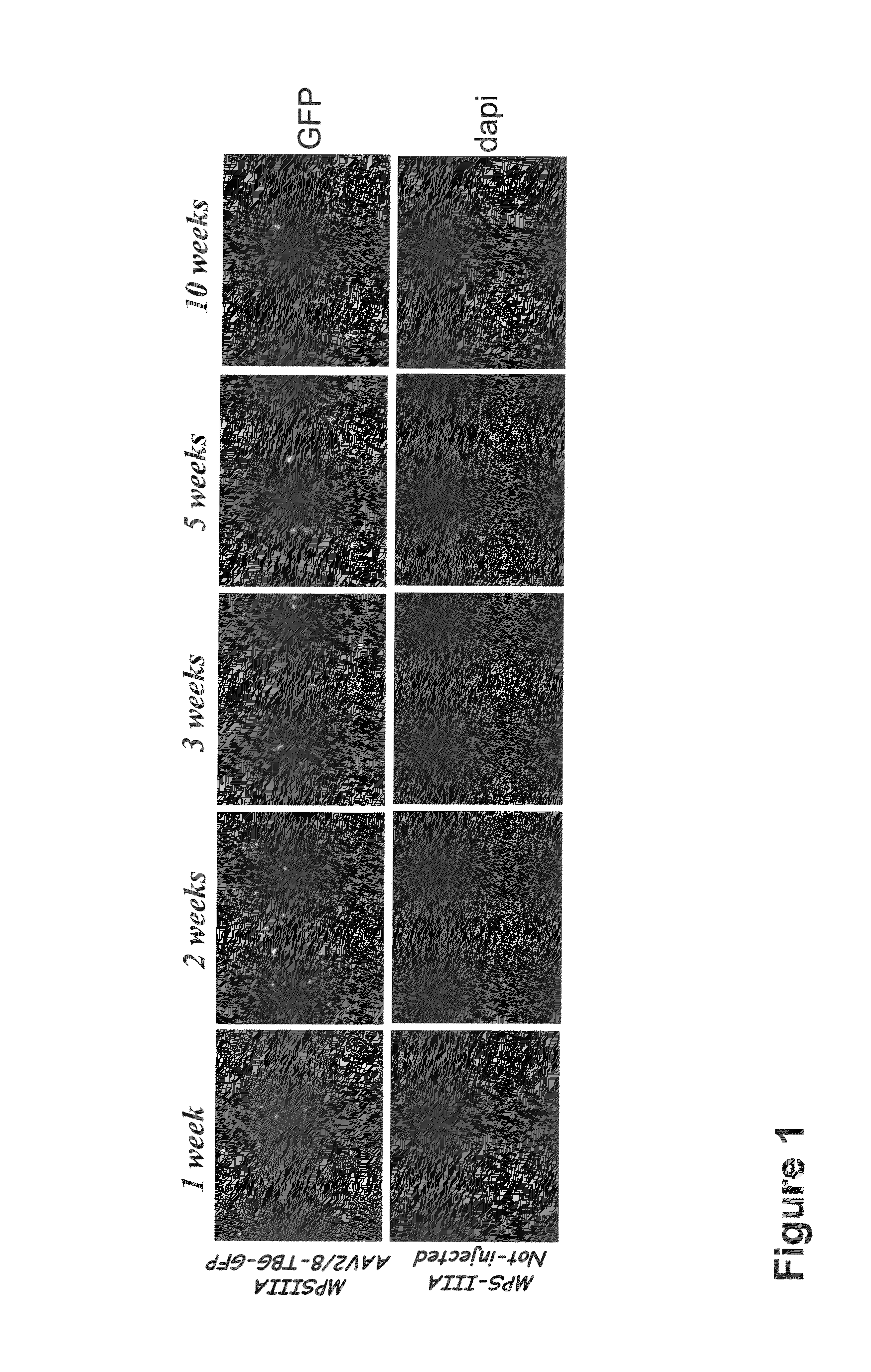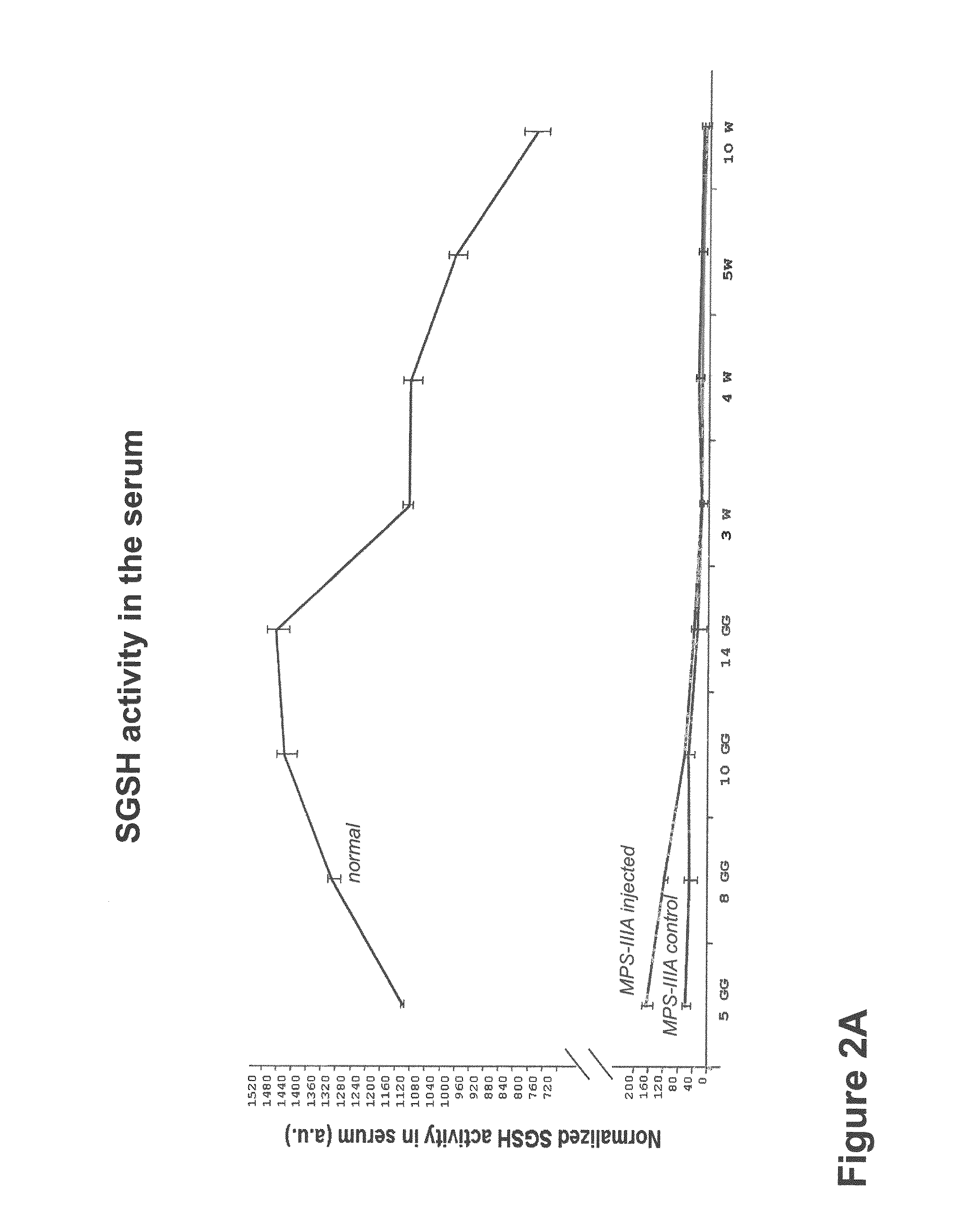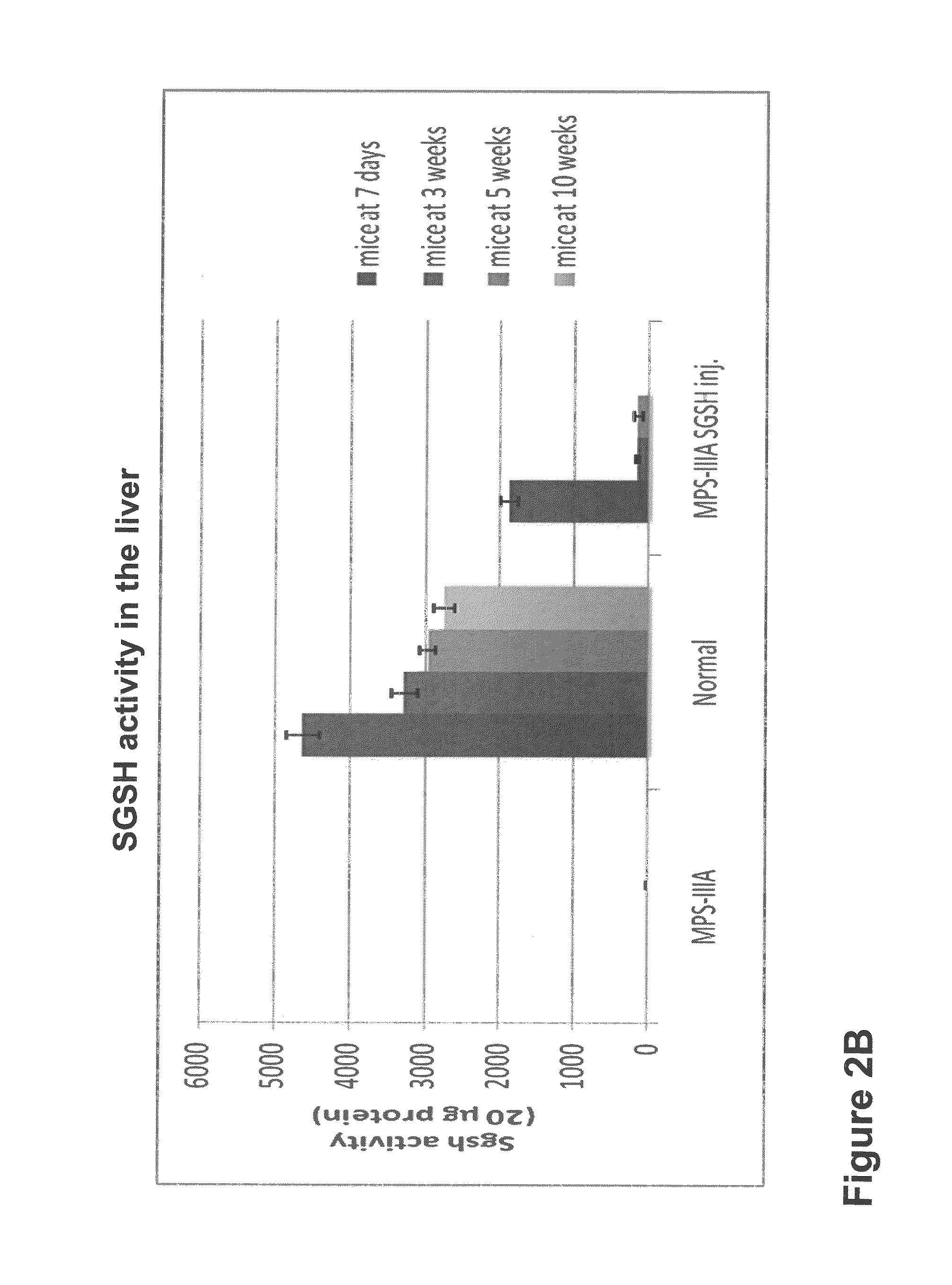Therapeutic strategies to treat CNS pathology in mucopolysaccharidoses
a technology of mucopolysaccharidose and therapeutic strategies, which is applied in the field of therapeutic strategies to treat cns pathology in mucopolysaccharidose, can solve the problems of cell damage and impede the effective delivery of therapeutic agents
- Summary
- Abstract
- Description
- Claims
- Application Information
AI Technical Summary
Benefits of technology
Problems solved by technology
Method used
Image
Examples
Embodiment Construction
[0016]As disclosed in the background art, brain pathology is the most common feature in lysosomal storage disorders. Therefore, the treatment of brain lesions represents the principal goal of any effective therapy for these disorders.
[0017]The major obstacle to efficiently treat the brain by systemic delivery of a therapeutic agent is the blood brain barrier (BBB).
[0018]Authors developed a new non-invasive therapeutic approach to treat the brain pathology in the mucopolysaccharidosis type IIIA (MPS-IIIA), a lysosomal storage disorder with a severe central nervous system involvement. This strategy is based on the construction of a chimeric sulfamidase (the sulfatase enzyme which is deficient in MPS-IIIA), optimized with two amino-acid sequences (one to the N-terminus and the other to the C-terminus of the protein) which confer to the modified sulfamidase the capability to be highly secreted and efficiently targeted to the brain by crossing the blood brain barrier (BBB). The modified ...
PUM
 Login to View More
Login to View More Abstract
Description
Claims
Application Information
 Login to View More
Login to View More - R&D
- Intellectual Property
- Life Sciences
- Materials
- Tech Scout
- Unparalleled Data Quality
- Higher Quality Content
- 60% Fewer Hallucinations
Browse by: Latest US Patents, China's latest patents, Technical Efficacy Thesaurus, Application Domain, Technology Topic, Popular Technical Reports.
© 2025 PatSnap. All rights reserved.Legal|Privacy policy|Modern Slavery Act Transparency Statement|Sitemap|About US| Contact US: help@patsnap.com



